Barcelona, a city known for its stunning architecture and vibrant culture, also harbors a rich industrial past, particularly in the neighborhood of Poblenou. Once the “Catalan Manchester,” Poblenou was at the heart of Barcelona’s industrial revolution. Today, it blends its historical roots with contemporary innovation and art, making it an essential stop on your Barcelona itinerary.
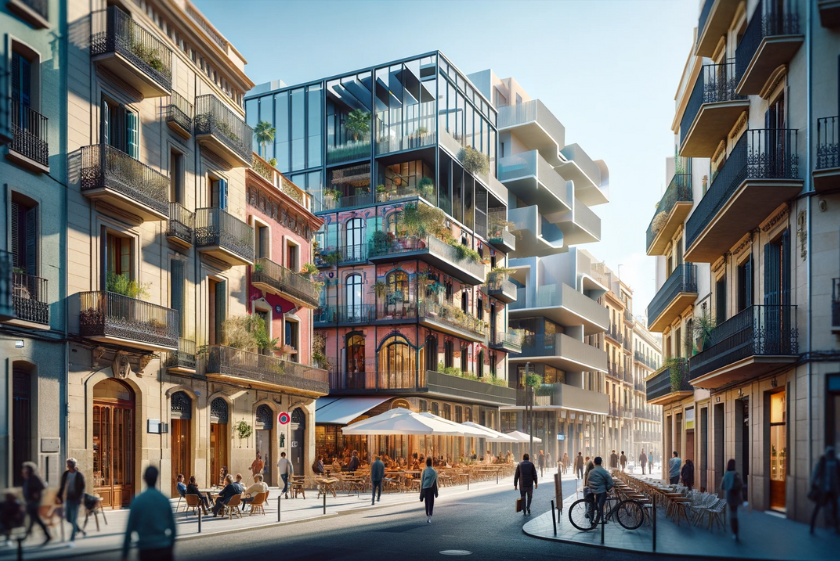
1. Poblenou: From Past to Present
Poblenou, translating to ‘New Village’, has undergone significant transformations from its early 20th-century industrial boom. The neighborhood, part of the larger Sant Martí district, was once filled with textiles, metal shops, and various manufacturing outlets. Post the 1992 Olympic Games, the area saw a major revamp, notably with the 22@ project, converting industrial spaces into innovation and tech hubs.
The Beating Heart: La Rambla del Poblenou
At the core of Poblenou is La Rambla del Poblenou, a vibrant street rich in history and local culture. This area is famed for its century-old shops and a variety of dining options, where traditional flavors meet modern culinary experiences.
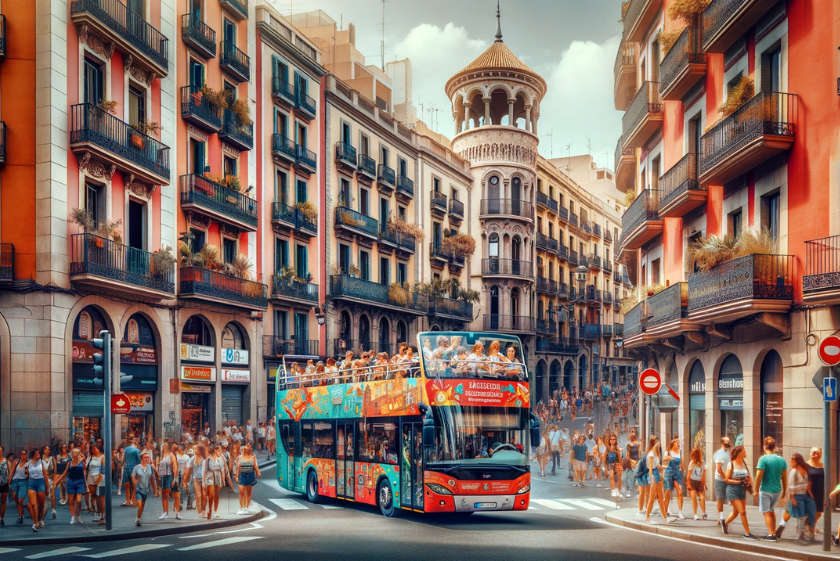
Street Art and Culture
Poblenou’s transformation is vividly captured in its street art, which adorns the walls of former industrial buildings. Northern areas of Sant Martí district, particularly around Carrer d’Espronceda and Carrer de Pere IV, offer a visual feast of graffiti and murals, reflecting the neighborhood’s artistic spirit.
2. Industrial Landmarks and Modern Marvels
Torre Agbar: A modern architectural wonder, designed by Jean Nouvel, symbolizes Barcelona’s innovative spirit. Parc de Diagonal Mar: Designed by Enric Miralles, this park represents the blend of green spaces within urban settings. Poblenou Cemetery: Known for its impressive funerary sculptures, it’s a testament to the area’s history and art.
FAQs About Poblenou
Q: How has Poblenou’s industrial past influenced its current culture? A: Poblenou’s industrial roots have laid the foundation for its current blend of tech, art, and cultural spaces, transforming old factories into hubs for creativity and innovation.
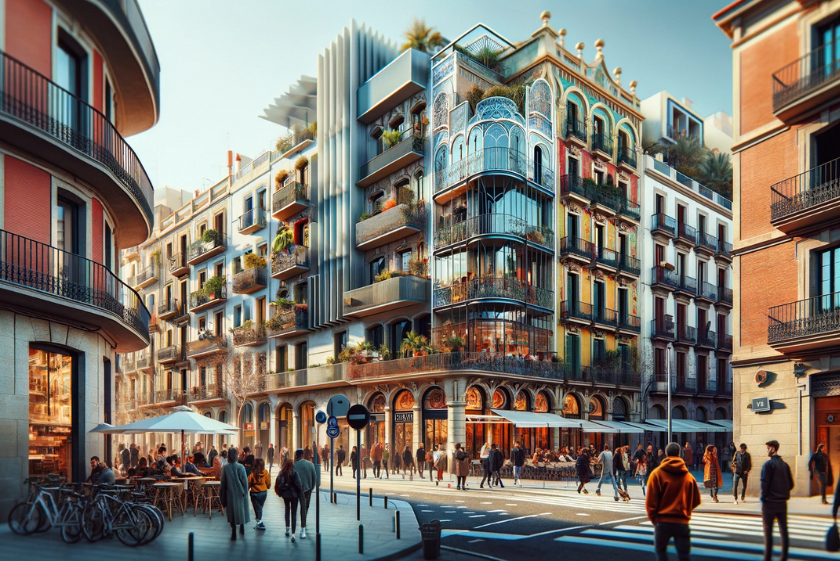
Q: What are some must-visit spots in Poblenou? A: La Rambla del Poblenou for its vibrant street life, the graffiti-laden streets for art enthusiasts, and the Poblenou Cemetery for a touch of history.
3. Journey through @22
The @22 project, an ambitious urbanization plan, redefined Poblenou by transforming 200 hectares of industrial land into a bustling innovation district. This area now houses universities, tech companies, and creative spaces, showcasing the district’s dynamic evolution.
Getting There
To explore Poblenou, take the yellow metro line (L4) and alight at Poblenou or Llacuna stops. These stations provide easy access to key areas like La Rambla del Poblenou and Mar Bella beach.
Barcelona Bus Turistic: Glòries Stop
To conveniently explore Poblenou and its surrounding areas, consider the Barcelona Bus Turistic. The Glòries stop is a strategic point to hop on and off, allowing you to seamlessly experience the district’s transformation. For tickets and more information, visit Tiqets.
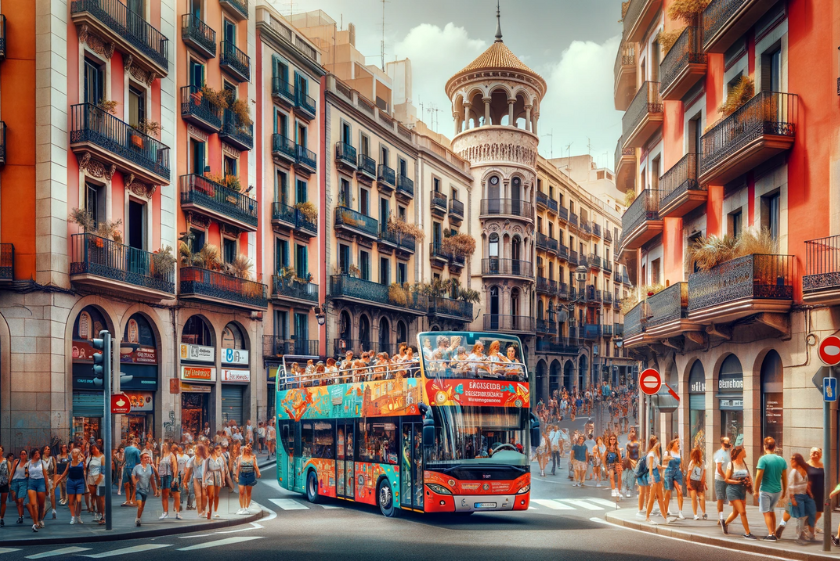
Conclusion: A Legacy Transformed
In conclusion, Poblenou is a vibrant testament to Barcelona’s industrial legacy, seamlessly merging its past with a modern, innovative future. A visit here offers a unique glimpse into the city’s transformative journey, making it a must-visit for anyone exploring Barcelona.
FAQs: Everything You Need to Know About Poblenou
Q: What makes Poblenou unique in Barcelona’s landscape?
A: Poblenou stands out for its blend of industrial heritage and contemporary culture. Its transformation from a manufacturing hub to a center for art and technology makes it a unique district in Barcelona.
Q: Can I find traditional Catalan cuisine in Poblenou?
A: Absolutely! Poblenou offers a diverse culinary scene, including traditional Catalan dishes. Explore the local restaurants and tapas bars along La Rambla del Poblenou for an authentic taste of Catalonia.
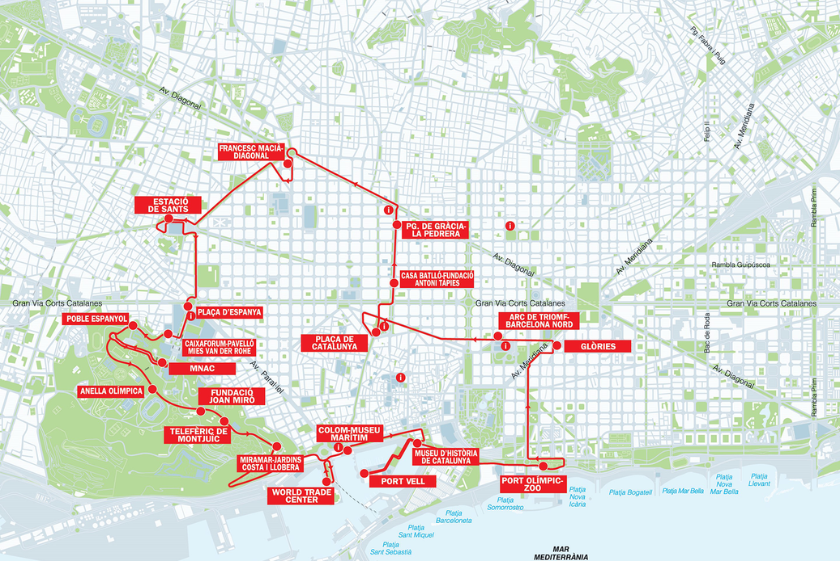
Q: Is Poblenou suitable for family visits?
A: Yes, Poblenou is a family-friendly neighborhood with parks, beaches, and cultural attractions that cater to all ages. It’s a great place to experience Barcelona’s local vibe away from the typical tourist spots.

2 thoughts on “Discover Barcelona’s Industrial Heritage: @22 Poble Nou-Stop Tour Guide”
Pingback: Archaeology Museum Catalonia: Unearthing the Past in Barcelona - Touristic Bus
Pingback: Flamenco Shows in Barcelona: A Comprehensive Guide - Touristic Bus